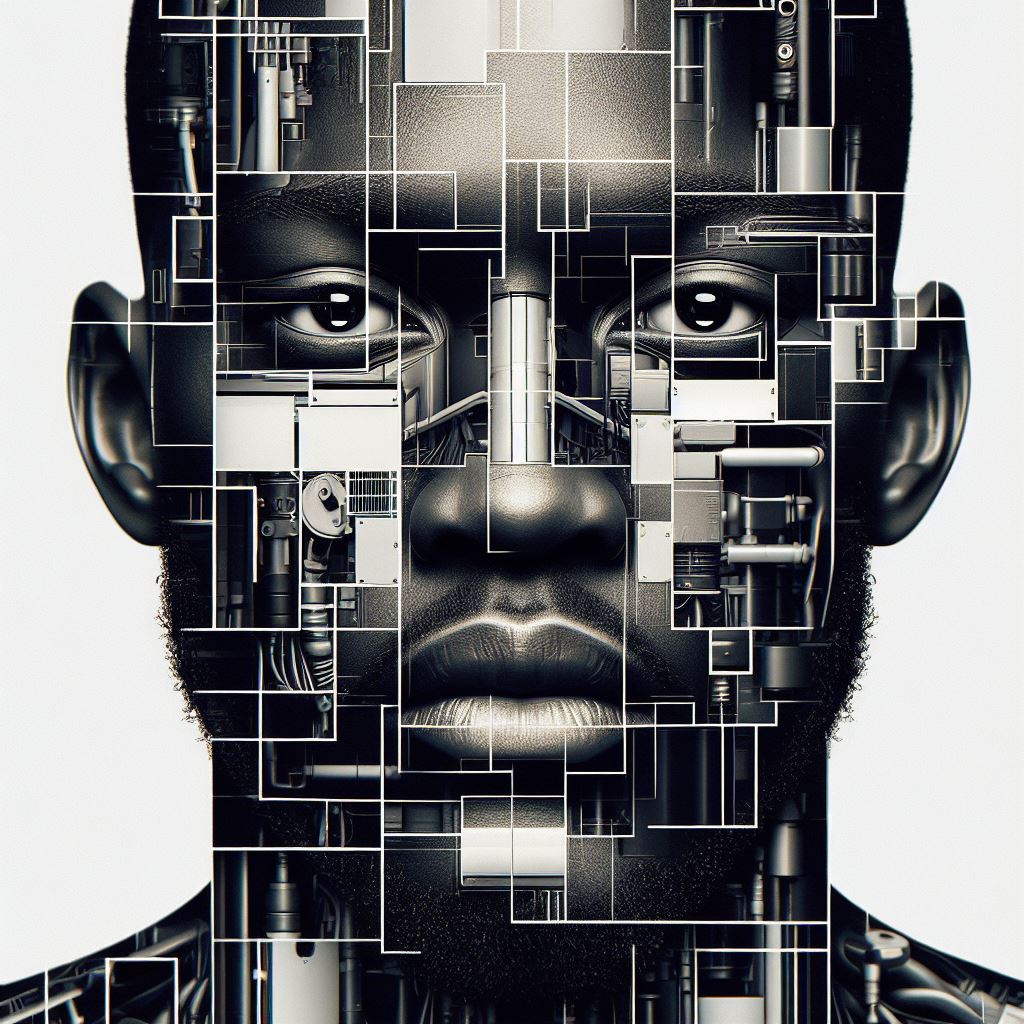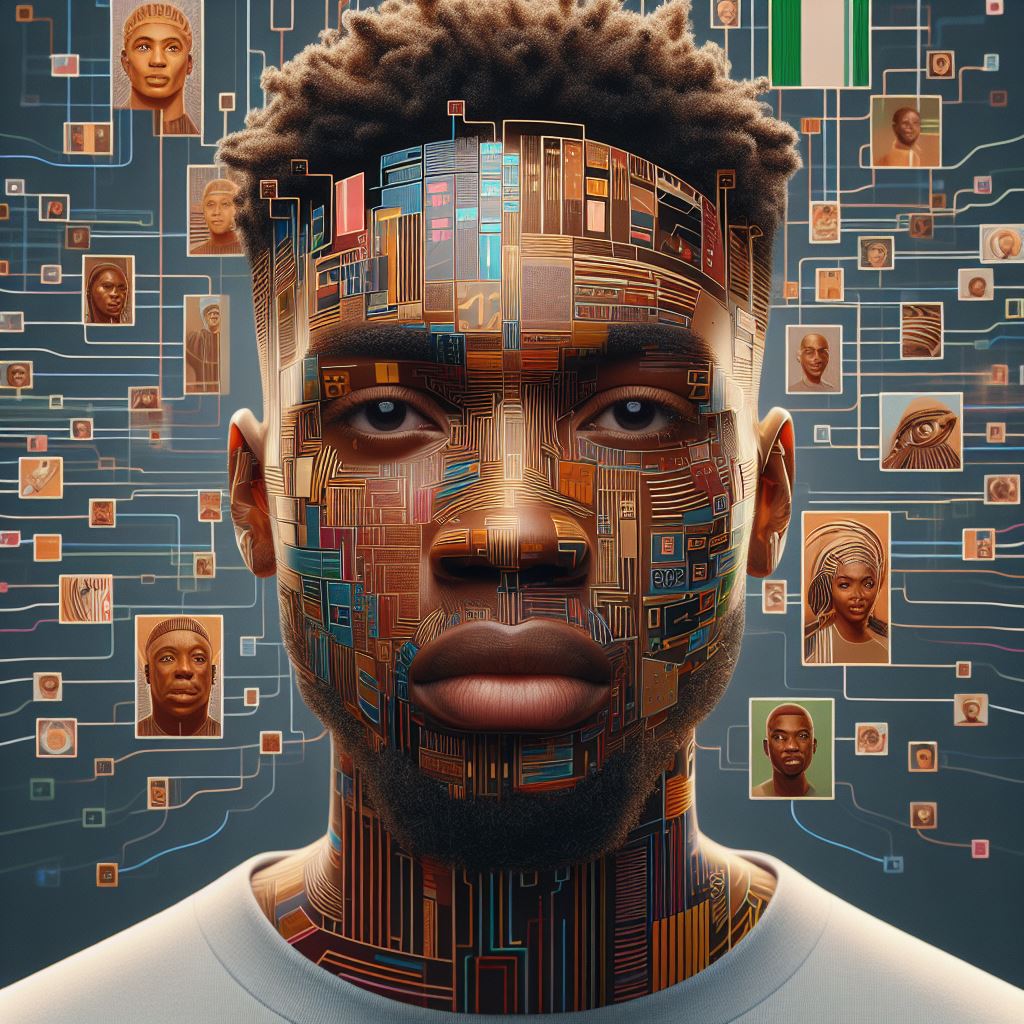Introduction to chatbots
Chatbots have become increasingly popular and are being used in various industries. So, what exactly is a chatbot?
A chatbot is a computer program that simulates human conversation through voice commands or text chats.
These intelligent bots play a vital role in industries such as customer service, healthcare, and e-commerce. They provide a personalized and efficient user experience.
The importance of chatbots lies in their ability to automate tasks, provide instant responses, and enhance customer satisfaction. They are available 24/7 and can handle multiple queries simultaneously.
Using chatbots offers several benefits. Firstly, they save time and resources by automating repetitive tasks. Secondly, they can handle high volumes of inquiries, improving customer service efficiency.
Chatbots also have a positive impact on customer engagement and retention. They provide personalized recommendations, making customers feel valued and understood.
Moreover, chatbots can collect valuable user data, enabling businesses to gain insights into customer preferences and behaviour.
In short, chatbots are revolutionizing the way businesses interact with customers.
Their ability to automate tasks, provide instant responses, and enhance user experience makes them invaluable in various industries.
Embracing this technology can give businesses a competitive edge and improve customer satisfaction.
Overview of Python programming language
- Python is a versatile and popular programming language known for its simplicity and readability.
- It is an open-source language, making it easily accessible to developers worldwide.
- Python supports multiple programming paradigms, including object-oriented, functional, and procedural programming.
- The language has a vast standard library and a thriving community that contributes to its growth and development.
A brief introduction to Python
- Python was created by Guido van Rossum and first released in 1991.
- The language emphasizes code readability and uses indentation and white space to define code blocks.
- Python is dynamic and strongly typed, meaning variables are not explicitly declared, and their types can change during runtime.
- It is widely used in various domains, including web development, data analysis, artificial intelligence, and, of course, chatbot development.
Advantages of using Python for chatbot development
- Python has a simple and intuitive syntax, making it easier to understand and write code.
- It offers excellent community support, with numerous resources and libraries available for chatbot development.
- Python’s extensive standard library provides tools for various tasks, including web scraping, natural language processing, and machine learning.
- With Python, developers can prototype and iterate quickly, allowing for rapid chatbot development and testing.
Popular Python libraries for building chatbots
- NLTK (Natural Language Toolkit): A comprehensive library for natural language processing tasks, such as tokenization, stemming, and semantic reasoning.
- ChatterBot: A Python library that facilitates building chatbots that can engage in conversation, learn from user interactions, and provide intelligent responses.
- TensorFlow: An open-source library for machine learning that enables developers to create powerful and sophisticated chatbots with neural networks.
- SpaCy: A library specifically designed for natural language understanding, featuring efficient processing and high accuracy.
In general, Python is an excellent choice for chatbot development due to its simplicity, versatility, and vast support from the community.
Its extensive libraries offer a wide range of tools for natural language processing and machine learning, making it easier to build intelligent and interactive chatbots.
With Python’s readability and quick prototyping capabilities, developers can create robust chatbot solutions efficiently.
Whether you’re a Nigerian developer or from any other part of the world, Python can help you create impressive chatbots to meet various needs.
Read: Top Python Courses and Certifications in Nigeria for 2024
Unlock Your Unique Tech Path
Get expert tech consulting tailored just for you. Receive personalized advice and solutions within 1-3 business days.
Get StartedUnderstanding Natural Language Processing (NLP)
When it comes to creating chatbots, understanding Natural Language Processing (NLP) is crucial.
NLP is a field of artificial intelligence that focuses on the interaction between computers and humans through natural language. It plays a vital role in chatbot development.
Tokenization
One of the key concepts in NLP is tokenization. Tokenization is the process of breaking down text into smaller units called tokens.
These tokens can be words, phrases, or even sentences. Tokenization allows the chatbot to understand and process the text effectively.
Stemming
Another important concept in NLP is stemming. Stemming is the process of reducing a word to its base or root form.
For example, the words “running” and “runs” would both be stemmed to “run.” Stemming helps in reducing the complexity of the text and simplifies the chatbot’s understanding.
Lemmatization
Lemmatization is also a significant concept in NLP. It is a more advanced technique compared to stemming as it reduces words to their base or root form, considering the word’s context.
Lemmatization provides more accurate results and enhances the chatbot’s ability to comprehend natural language.
NLP libraries available in Python for chatbot development.
Now that we understand the key concepts of NLP, let’s explore the NLP libraries available in Python for chatbot development.
Natural Language Toolkit
One popular NLP library is NLTK (Natural Language Toolkit). NLTK provides various tools and algorithms for natural language processing, including tokenization, stemming, and lemmatization.
SpaCy
Another widely used NLP library in Python is spaCy. SpaCy offers efficient and fast features for natural language understanding, such as part-of-speech tagging and named entity recognition.
It is known for its ease of use and high performance.
Transformers
Transformers is another powerful NLP library that has gained popularity in recent years.
It provides state-of-the-art models for tasks such as text classification, named entity recognition, and question answering. Transformers have revolutionized the field of NLP with its advanced architecture.
Unlock Premium Source Code for Your Projects!
Accelerate your development with our expert-crafted, reusable source code. Perfect for e-commerce, blogs, and portfolios. Study, modify, and build like a pro. Exclusive to Nigeria Coding Academy!
Get CodeIn summary, NLP is the backbone of chatbot development. Understanding concepts like tokenization, stemming, and lemmatization is essential for effective natural language understanding.
Python provides a range of NLP libraries like NLTK, spaCy, and Transformers, which can be utilized to build robust and intelligent chatbots.
Read: How Python Can Help Nigerian SMEs Simplify Business Tasks
Designing the chatbot
Determining the purpose and target audience of the chatbot
When designing a chatbot with Python, it is crucial to understand its purpose and target audience.
Whether the chatbot is meant for customer service, information retrieval, or entertainment, knowing the goal will help shape its design and functionality.
Additionally, identifying the target audience will allow for customization and effective communication.
Creating a conversation flowchart
A conversation flowchart is an essential component of chatbot design. It visualizes the different paths a conversation can take and helps ensure a smooth user experience.
By mapping out the various interactions and potential user responses, developers can anticipate different scenarios and appropriately program the chatbot’s responses.
Defining core functionalities and features of the chatbot
To create a functional chatbot, it is important to define its core functionalities and features.
For example, if the chatbot’s purpose is customer service, it should be equipped to answer frequently asked questions, provide relevant information, and assist with common issues.
These core functionalities will serve as the foundation for the chatbot’s development.
Effectiveness and usability
While designing the chatbot, certain considerations can influence its effectiveness and usability:
- User-friendly interface: The chatbot should have a simple and intuitive design that allows users to interact effortlessly.
- Natural language processing: By leveraging natural language processing techniques, the chatbot can better understand user inputs and responses, ultimately enhancing the overall user experience.
- Personalization: Customizing the chatbot’s responses based on the target audience’s preferences or previous interactions can enhance engagement and user satisfaction.
- Multi-platform compatibility: Ensuring the chatbot is compatible across various platforms, such as websites, messaging apps, and social media platforms, will increase its accessibility to a wider audience.
- Continuous learning and improvement: Implementing machine learning algorithms can enable the chatbot to learn from user interactions over time, improving its responses and accuracy.
By incorporating these considerations during the design process, developers can create a chatbot that effectively serves its intended purpose and audience.
Python provides various libraries and frameworks such as NLTK, TensorFlow, and ChatterBot, which simplify the implementation of these features.
In essence, designing a chatbot with Python involves several crucial steps.
Determining the purpose and target audience, creating a conversation flowchart, and defining core functionalities are key aspects of the design process.
Additionally, considerations such as user interface, natural language processing, and continuous learning contribute to creating an effective and user-friendly chatbot.
By following these guidelines and leveraging Python’s capabilities, Nigerian developers can build chatbots that provide valuable services to their users.

Building the chatbot with Python
In this section, we will explore the process of creating a chatbot using the Python programming language.
We will cover the necessary steps to set up the Python development environment, install the required libraries, and write the code for various chatbot components.
Setting up the Python development environment
Before we begin building our chatbot, we need to set up the Python development environment. This involves installing Python on our system and configuring it properly.
The first step is to download and install Python from the official Python website. Make sure to choose the correct version for your operating system.
Once Python is installed, we will need to set up a virtual environment. This allows us to create an isolated workspace for our chatbot project, ensuring that it doesn’t interfere with other Python installations on our system.
To create a virtual environment, we can use the built-in ‘venv’ module in Python. By using the command “python3 -m venv myenv”, a virtual environment named ‘myenv’ will be created.
Installing necessary libraries for chatbot development
Now that our development environment is set up, we need to install the necessary libraries for chatbot development.
One of the most important libraries for chatbot development is ‘nltk’ (Natural Language Toolkit). This library provides a wide range of tools and resources for natural language processing tasks.
We can install ‘nltk’ using the pip package manager by running the command “pip install nltk”.
Additionally, we may need to download specific resources for NLP tasks using the command “nltk.download(‘resource_name’)”.
Writing the code for various chatbot components
With our development environment and libraries set up, we can now start writing the code for our chatbot. This involves implementing various components such as input processing, NLP, and response generation.
First, we need to understand how to process user input. This includes techniques such as tokenization (breaking input into words or sentences) and normalization (converting input to a standard format).
Next, we can use the ‘nltk’ library to perform NLP tasks like part-of-speech tagging, named entity recognition, and sentiment analysis. These tasks help in extracting meaningful information from user input.
Finally, we can generate appropriate responses based on the processed input. This can be done using predefined patterns, machine learning algorithms, or a combination of both.
By combining these components, we can create an interactive and intelligent chatbot that can understand user input and respond accordingly.
Building a chatbot with Python requires setting up the development environment, installing necessary libraries, and writing code for various chatbot components.
With these steps, we can create a functional and responsive chatbot capable of communicating with users.
Read: Python and AI: Future Trends in the Nigerian Tech Industry
Integrating the chatbot with platforms
One of the key steps in creating a chatbot with Python is integrating it with various messaging platforms.
This allows users to interact with the chatbot through their preferred platform, such as Facebook Messenger or WhatsApp.
Preparing the chatbot for integration with messaging platforms
Before integrating the chatbot, it is important to prepare it for seamless communication on different platforms.
This involves adapting the chatbot’s code to ensure compatibility and functionality across various messaging apps.
To prepare the chatbot, developers need to consider the specific requirements of each messaging platform. For example, Facebook Messenger has its own set of guidelines and APIs that need to be followed.
Similarly, WhatsApp has different integration methods and features.
Developers should also ensure that the chatbot adheres to the platform’s user interface guidelines.
This includes customizing the chatbot’s appearance, such as its profile picture or name, to match the branding and aesthetic of the messaging app.
Configuring APIs and webhooks for seamless communication
Once the chatbot is ready for integration, the next step is to configure APIs and webhooks for seamless communication.
APIs (Application Programming Interfaces) allow the chatbot to send and receive data from the messaging platform, while webhooks enable real-time communication between the chatbot and the platform.
Developers need to register their chatbot with the desired messaging platforms and obtain the necessary API keys and credentials.
These keys are then used to authenticate and establish a secure connection between the chatbot and the messaging app.
Webhooks play a crucial role in receiving and handling incoming messages from users. They allow the chatbot to immediately respond to user queries and provide real-time interactions.
Developers need to configure webhooks to listen for incoming messages and trigger appropriate actions or responses from the chatbot.
Testing the chatbot on different platforms
After integrating the chatbot and configuring APIs and webhooks, it is essential to thoroughly test the chatbot on different messaging platforms.
This ensures that the chatbot functions as intended and provides a seamless user experience.
Developers should perform comprehensive tests to verify the chatbot’s functionality, responsiveness, and accuracy across multiple platforms.
This includes testing various scenarios, such as sending text messages, receiving images or media files, and handling user interactions like button clicks or quick replies.
Additionally, developers should also test the chatbot’s performance under different conditions, such as high message volumes or simultaneous user interactions.
This helps identify any potential bottlenecks or issues that may arise during real-world usage.
Regular testing and monitoring of the chatbot’s performance on different platforms are crucial for maintaining its efficiency and reliability.
Developers should continuously gather user feedback and make necessary improvements to enhance the chatbot’s functionality and user experience.
All in all, integrating a chatbot with various messaging platforms involves preparing the chatbot for integration, configuring APIs and webhooks, and thoroughly testing its functionality on different platforms.
By following these steps, developers can ensure a seamless and efficient chatbot experience for users across multiple messaging apps.
Read: 5 Python Libraries Every Nigerian Developer Should Know
Improving the chatbot’s performance
Creating a chatbot is just the first step in the development process. To ensure that the chatbot delivers a satisfactory user experience, it is important to continually improve its performance.
Evaluating and refining the chatbot’s NLP capabilities
One way to improve the chatbot’s performance is by evaluating and refining its natural language processing (NLP) capabilities.
This involves analyzing the chatbot’s ability to understand and respond to user inputs accurately.
By reviewing the chatbot’s conversations with users, developers can identify patterns and areas where the chatbot may be struggling.
This feedback can then be used to refine the chatbot’s algorithms and enhance its ability to accurately interpret user queries.
Implementing machine learning techniques for better understanding and response generation
Machine learning techniques can significantly improve the chatbot’s performance.
By leveraging machine learning algorithms, developers can train the chatbot to understand and generate more accurate and contextually appropriate responses.
Through the use of training data and algorithms, the chatbot can learn from past interactions and continuously improve its understanding of user queries.
This iterative learning process allows the chatbot to refine its responses over time, ensuring a better user experience.
Gathering user feedback and continuously improving the chatbot
User feedback is invaluable in improving the performance of a chatbot.
By actively soliciting feedback from users, developers can identify areas where the chatbot may be falling short and make necessary improvements.
Regularly collecting and analyzing user feedback helps developers understand user expectations and preferences.
This information can then be used to make informed decisions about the chatbot’s design, functionality, and overall user experience.
Additionally, developers can implement feedback loops within the chatbot system to monitor and track user satisfaction.
By continuously analyzing user interactions and sentiments, developers can identify trends and areas where the chatbot may need further refinement.
The importance of continuous improvement
Improving the chatbot’s performance should be an ongoing process. As technology advances and user expectations evolve, it is crucial for developers to stay updated and adapt the chatbot accordingly.
Continuous improvement ensures that the chatbot remains relevant and effective in meeting user needs.
Developers can consistently deliver a high-quality user experience by actively evaluating and refining the chatbot’s capabilities, implementing machine learning techniques, and gathering user feedback.
Overall, improving the performance of a chatbot involves evaluating and refining its NLP capabilities, implementing machine-learning techniques, and gathering user feedback.
Continuous improvement is key to ensuring the chatbot remains relevant and effective in meeting user needs.
Conclusion
Finally, we have discussed the steps to create a chatbot with Python.
First, we need to gather the necessary libraries and tools.
Next, we design the conversation flow and create intents and entities.
Then, we train the chatbot using a large dataset and optimize its performance.
We also explored the importance of chatbot development skills in the Nigerian tech industry.
In today’s digital world, businesses are increasingly relying on chatbots to enhance customer experience.
Therefore, having proficiency in chatbot development can create numerous career opportunities in Nigeria.
Lastly, I would like to encourage Nigerian developers to explore and innovate with chatbot technology.
Chatbots have the potential to revolutionize various sectors, such as healthcare, finance, and e-commerce.
By staying updated with the latest advancements and continuously improving our skills, we can lead the way in chatbot development in Nigeria.
Let’s embrace this technology and contribute to the growth and development of our country.




